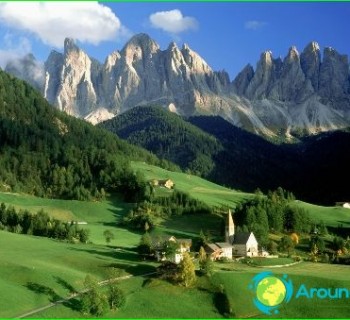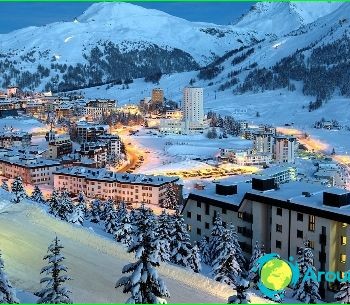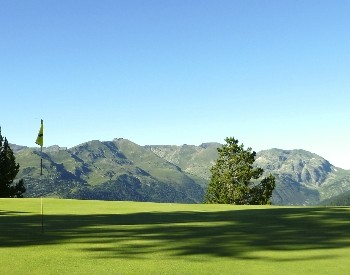Coat of arms of Andorra
And although the coat of arms of Andorra was approved quite recently, in 1969, at one glance it becomes clear what a long history this dwarf state and its people have.
The principality, on the one hand, settled down very conveniently - in the Eastern Pyrenees, between France and Spain. On the other hand, it was not without the influence of the two great powers on the politics, economy and culture of the tiny neighbor. And this is also reflected in the main state symbol.
Together we are stronger!
This is how the motto of the principality, written on the coat of arms, is translated from the Latin language. Realistically assessing the scale of the action, namely the small size of the territory and the small size of the population, the authorities of the country are trying to unite the people with such a motto..
Other elements of the coat of arms remind of the glorious historical past, significant events, characters, dynasties. In addition, for the image of the coat of arms of Andorra, two primary and two additional colors have been chosen, each of them looks very dignified and rich:
- scarlet and gold colors playing the main role;
- the silver color found in the miter finish;
- azure color in the details of animal figurines.
The main symbol of Andorra is a four-part shield. The upper left part is scarlet. In this field are located the elements associated with the Catholic Church, namely the staff and the episcopal miter. The staff and headdress of the highest clergy of the Catholic Church are depicted in gold color, the miter has separate silver elements.
The upper right part of the shield consists of a gold field and three vertical scarlet stripes (pillars). It is reminiscent of the important Dom de Foix dynasty from southern France. At various times, representatives of this surname owned neighboring lands, including the territories in which Andorra is located today..
The lower left part of the shield is similar to the previous one, again a golden field and scarlet pillars (vertical stripes), only their number has increased by one. And this part of the coat of arms symbolizes Catalonia, which is part of modern Spain. The historical territory of Catalonia was much wider, it covered both part of Southern France and the Eastern Pyrenees, where Andorra is now located.
The rest (bottom right) repeats the color of the upper left margin, gold, and has images of two cows made in scarlet color with blue hooves, horns, collar and bells. This area of the coat of arms symbolizes Béarn.


